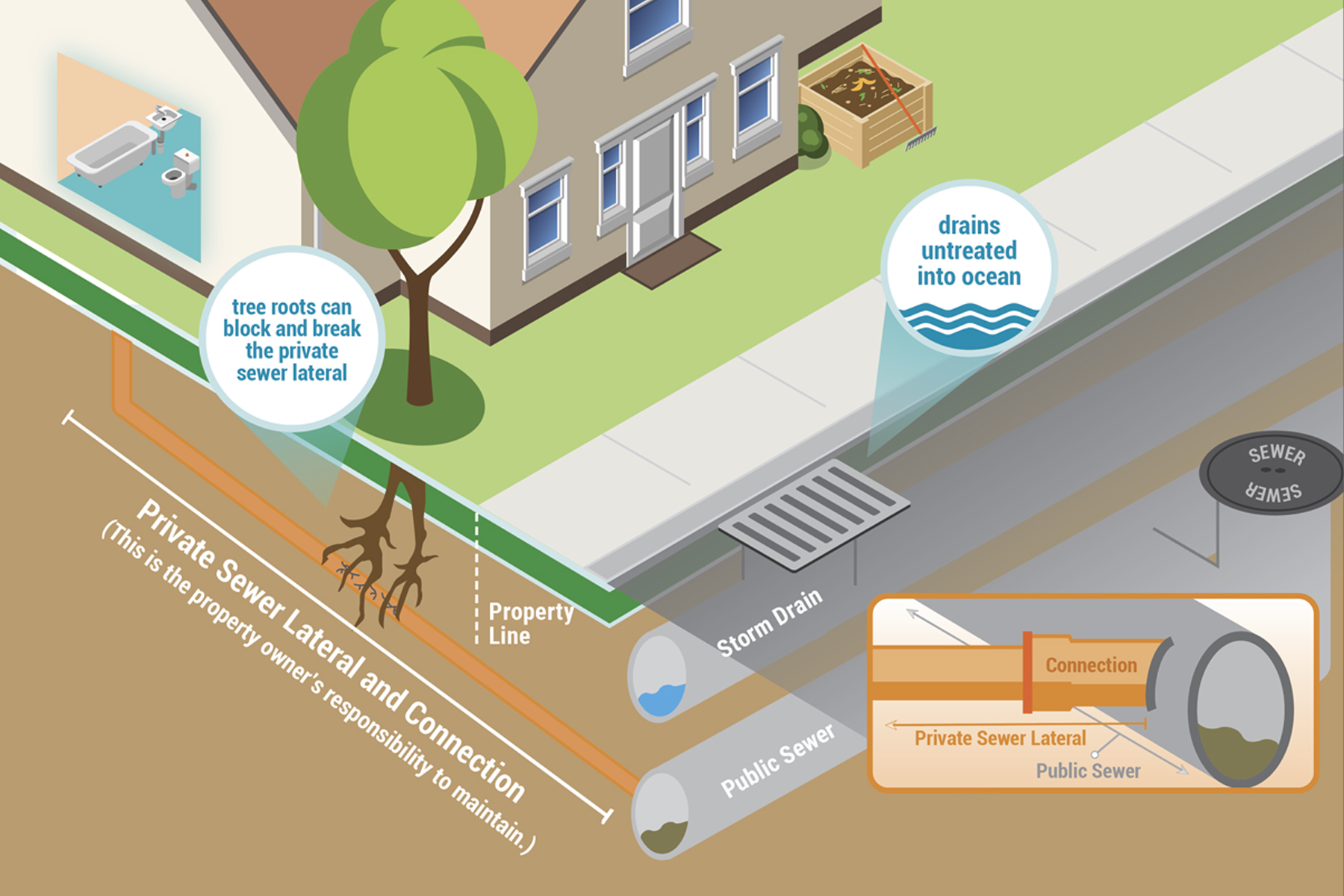How To Prevent And Report Sewage Spills
If your property has sewer service, you own a private sewer line (also known as private lateral). Your private lateral is what transports wastewater from indoor plumbing fixtures like toilets, sinks, and dishwashers to the public sewer line and treatment plants. Property owners must maintain their private laterals from the connection at their property to the public sewer (which can include areas under the sidewalk and street) to prevent any spills. Sewage spills can cause pollutants to get into the storm drain system and go untreated into our waterways, damaging water quality and marine life.

Tips For Lateral Maintenance:
Prevent Blockages
- Only flush toilet paper down the toilet.
- Scrape food scraps into a designated food waste/organics receptacle before rinsing dishes and utensils in the sink.
- After cooking at home, let grease cool then pour or scrape it into a metal can. When the can is full, dispose of grease properly.
Conduct Structural Maintenance
- Work with a licensed plumber to map out and decide the optimal maintenance schedule for your property.
- Clean your private laterals occasionally to eliminate grease, debris, and roots.
- Repair or replace worn down or damaged private laterals as soon as possible.
Watch for Signs of a Spill or Backup
- Water is draining slower than usual and getting slower over time.
- Drains are backing up inside of buildings.
- Unusually wet or soggy ground in your yard, which might be accompanied by odors.
What To Do When You See a Sewage Spill
- Turn off the property’s main water supply or stop all water usage.
- Contact a licensed plumber to fix a suspected sewer backup or leak.
- Contact the relevant sewer agency for sewer spills from a cleanout or manhole.
Report Sewage Spills Immediately
To report your sewage spill to the proper authority, enter the sewage spill address into the map below and contact the appropriate authority directly.
More Information
For more information on sewage system and spill maintenance, check our brochure below: